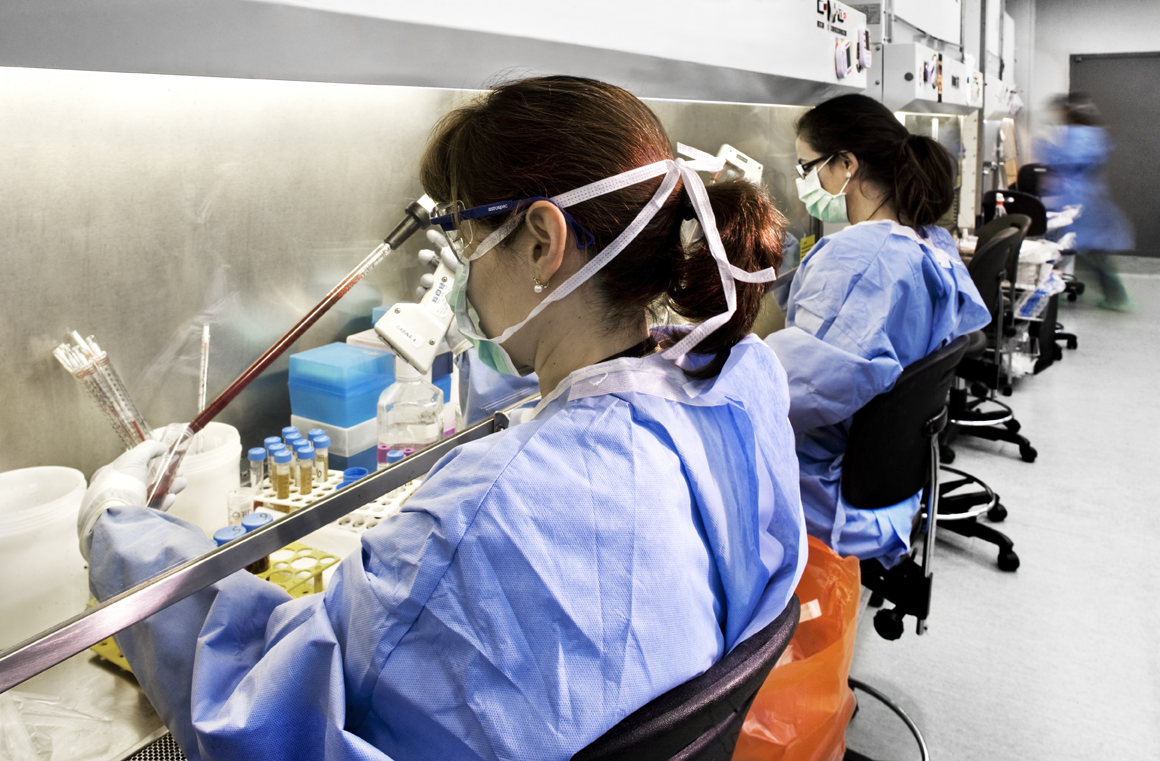A study led by IrsiCaixa on people who are regularly exposed to HIV but remain unifected give new clues for the vaccine development
- Researchers at the Institute for AIDS Research IrsiCaixa have studied the causes why some people highly exposed to the HIV virus do not become infected. They have developed a novel technique that have allowed to detect signals of potential protection against HIV.The findings may give researchers important new insights for designing preventive HIV vaccines in the future and for understanding the immunity to HIV.
- Using this new approach, the researchers can, for the first time, document very strong immune responses to HIV in all of the tested individuals. As previous tests had not detected such strong responses, the existence of such an immune response was very controversial within the scientific community.
- Some of the responses observed are similar to those seen in people that were protected from HIV infection in the preventive vaccine trial in Thailand, which showed the best levels of protection obtained so far. This similarity confirms that the identified immune responses give important clues for a better design of a preventive HIV vaccine in the future.
- The results of this study, led by IrsiCaixa, jointly funded by “la Caixa” Foundation and the Government of Catalonia Department of Health, have been published in the Journal of Infectious Diseases on October 14.
After HIV infecton, the first signs of the diseases associated can take years to appear. When the person starts treatment, the level of virus decreases and the weakened immune system may start recovering. However, there are some people whose control of HIV is atypical, such as elite controllers (subjects who manage to suppresse the replication of HIV without taking antiretroviral treatment) or the rapid progressors (infected patients who develop an unusually rapid HIV disease course).
But there is another group of people that caught the attention of researchers long time ago: the HESN (Highly Exposed Sero Negative), people with regular exposure to HIV but who do not become infected. Given the high prevalence of HIV infection in some groups of the sexually active population, it is highly probable that these HESN individuals get in contact with HIV on a repeated basis. However, some of them do not become infected despite engaging in highest risk behavior. The characterization of the responses of the immune system to HIV in these individuals could greatly help the development of effective HIV vaccine candidates.
Potential protection against VIH

Researchers at the Institute for AIDS Research IrsiCaixa jointly funded by “la Caixa” Foundation and the Government of Catalonia Department of Health, have studied the causes why these people highly exposed to the virus HIV do not become infected. They have developed a novel technique that has allowed to detect signals of potential protection against HIV.The findings give researchers important new insights for designing preventive HIV vaccines in the future and for understanding the immunity to HIV.
The study will be published tomorrow October 14 in the Journal of Infectious Diseases, and has been carried out in collaboration with researchers and physicians from national and international research groups and community-based centres worldwide: CLA Center for HIV Prevention Research (CPR); Los Alamos National Laboratory, the Fight Against AIDS Foundation, the Health Sciences Research Institute Germans Trias i Pujol; the Projecte dels NOMS-Hispanosida BCN Checkpoint, the Hospital Clínic, the Asociacion Civil Impacta Salud y Educacion from Peru.
This finding demonstrates for the first time that using the correct techniques, surprisingly strong HIV-specific immune responses can be detected in all HESN individuals exposed to HIV. This issue has been a topic of heated debate because past studies were unable to reliably identify strong responses of the immune system to HIV.
“The advances made in the new study have major implications for the development of a preventive HIV vaccine”, states the ICREA Senior Research Professor at IrsiCaixa Christian Brander, coordinator of the study.
The new technique developed will also be useful to determine responses of the immune system in different clinical settings, including vaccine trials and immune disorders others than HIV infection.
Similar responses to the RV144 HIV preventive vaccine trial
“Those responses of the immune system to HIV are, in some aspects, similar to the ones seen in people that seem protected from HIV infection in the preventive vaccine trial in Thailand, the RV144 trial", states Brander.

The first results of the RV144, which were published in 2009, showed that the vaccine was 31% effective in protected from HIV infection. These are the best results to date of any preventive vaccine tested. Furthermore, recent studies in individuals from this RV144 trial have described that the potential protective effect may be due to a specific and simultaneous response of one sort of proteins called cytokines, which are responsible for activating the immune system. Some of the same cytokines and responses have also been detected in the people that participated in the study by IrsiCaixa. According to Brander “this similarity confirms that we have identified a promising immune response that may contribute to protection from HIV and gives us a clue that could help us tremendously in better designing preventive HIV vaccines in the future”.
An innovative technique that overcomes previous limitations
The discovery led by IrsiCaixa has been possible thanks to the development of a new sensitive and reliable technique that overcomes many of the limitations of earlier standard assays and methods that have missed such responses of the immune system in the past. “To develop this novel approach, we have taken into account the extensive HIV genetic variability and the wide range of possible immune responses”, adds Marta Ruiz-Riol, the lead author of the study.
Marta Ruiz-Riol et al. Alternative effector-function profiling identifies broad HIV-specific T-cell responses in highly HIV-exposed individuals who remain ininfected. Journal of Infectious Diseases. 2014. PMID 25249264. Read